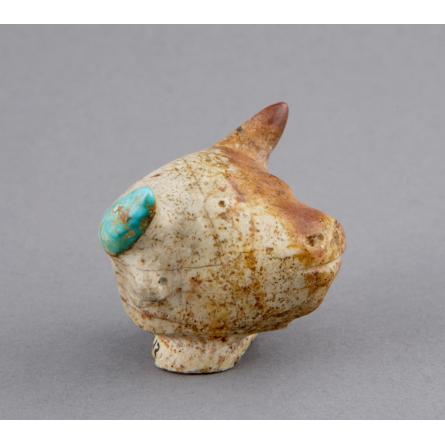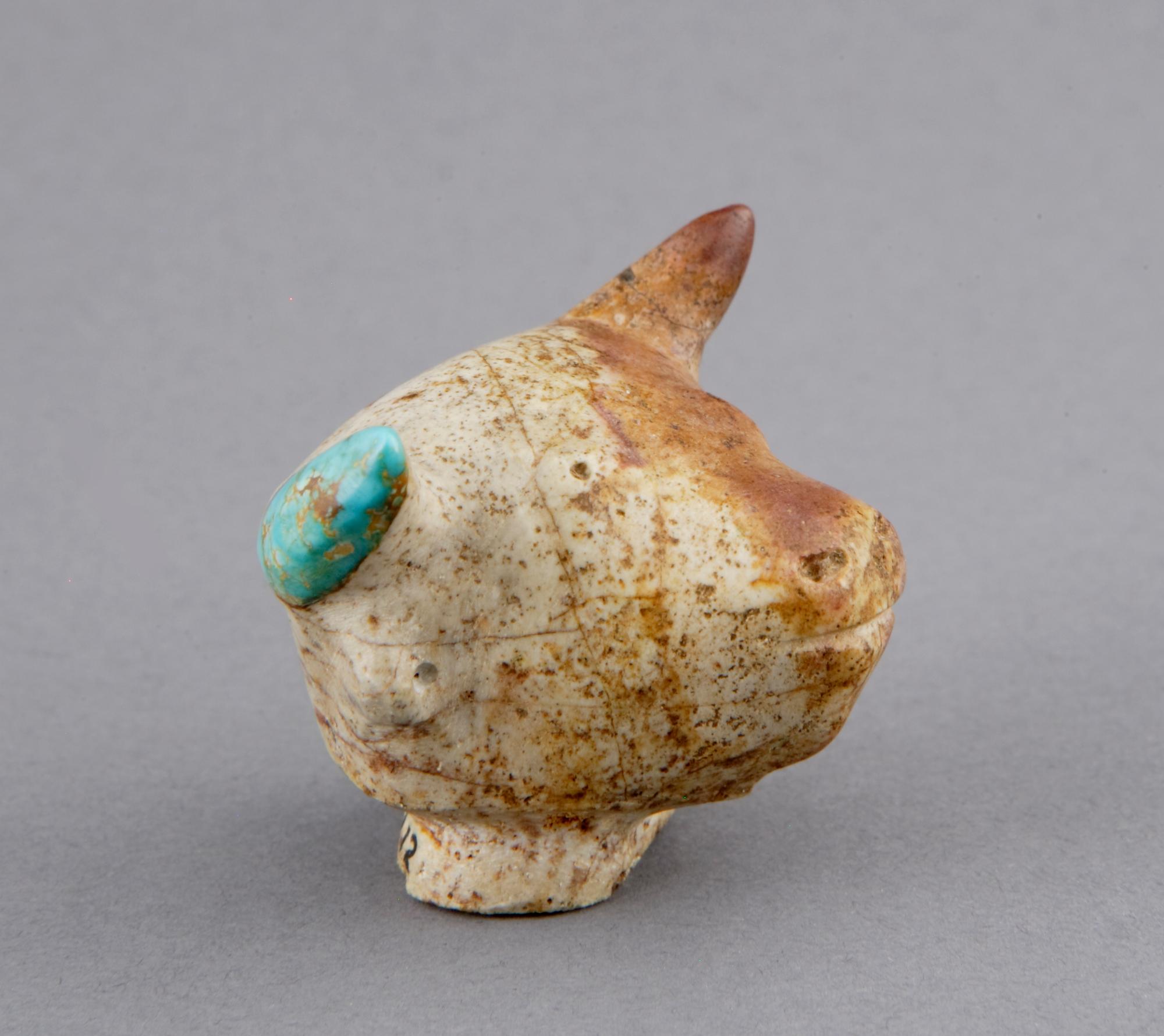
Photograph by Addison Doty. Copyright 2010 School for Advanced Research.
Carving, cow or bull
Date: before 1952
Attributed to: Leekya Deyuse (1889 - 1966)
Dimensions:
3.2 × 3.5 × 3.1 cm (1 1/4 × 1 3/8 × 1 1/4 in.)
Medium: turquoise
Credit Line: Gift of Amelia Elizabeth White, 1952.
Place Made:
Zuni Pueblo, McKinley County, New Mexico, Southwest, United States, North America
Object Number: IAF.S739
Not on view
Tribal Collection Review RemarksOctavius Seowtewa during collection review visit February 17 and 18, 2010 (Events Record “Collection Review: Zuni Tribe, Review 4”): The catalog card states this is a bull’s head carving, but there is no way of knowing if it was meant to be a bull or a cow. A better word might be “bovine” head. One of the horns almost looks like it is glued on because it is of blue turquoise, whereas most of the piece is brown turquoise matrix. However, it is all from one piece of stone and the turquoise is naturally present, not glued on.
Though small carvings such as this, usually depicting an animal, are frequently referred to as “fetishes,” it is important to note that they are not true fetishes. True fetishes are made and used specifically for spiritual or ceremonial purposes and uses. This type of item, however, is made specifically for sale. It is more appropriate to refer to commercially-made figures of this type as “carvings.”
Carvings produced for commercial purposes depict a wide variety of animals, but there are only six animal depictions that can become true fetishes. They are animals that are associated with the six directions, which are each associated with a particular color. The six animals should be carved from a stone that is the color of the associated direction. The six animals and their corresponding directions/colors are: Mountain Lion-North-Yellow; Bear-West-Blue; Badger-South-Red; Wolf-East-White; Eagle-Sky (Up)-Multi-color; Mole or Shrew-Underworld (Below)-Black. Any of these six animal carvings can become a true fetish, IF it is given a spiritual life by certain Zuni religious leaders. These fetishes would be used by Zuni people for protection, and by Zuni hunters, depending on which animal is chosen for the fetish, for assistance in the hunt.
In Collection(s)
Bibliography:
Leekya
- Pg. 52
- Fig. Plate 17c
The Indian Arts Research Center, in collaboration with Native American community scholars, strives to present accurate collections records. Records may be updated as new information becomes available and is reviewed with the Native American community having cultural affinity to particular items. Please write to iarc@sarsf.org if you have questions or concerns related to the documentation.
